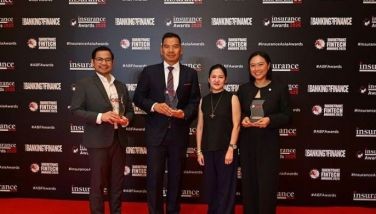Restoring fundamentals
MANILA, Philippines - "Restoration: Methods and Instruments of Italian excellence in Art, Science and Technology,” which opened formally at the University Theater Lobby at UP Diliman, features concepts, theoretical frameworks and various methods of intervention employed by experts in the field.
Documentation of intervention procedures were presented while restoration on Leonardo da Vinci’s “Last Supper” and Raphael’s “Madonna del Cardellino” were highlighted.
Focal points
Intercessions intended to preserve, conserve and safeguard works of art for future generations are understood as restorative pursuits. The Italian expertise in this branch of learning is recognized worldwide. It has always been at the forefront in developing technological advancements and spearheading interest in the discipline.
“Italy has a rich tradition in the arts and sciences. We initiated this effort to promote a deeper value for cultural heritage and to foster a knowledgeable exchange of ideas and approaches with local professionals,” shared Emanuela Adesini, cultural attaché of the Italian Embassy.
 Detail of Raphael’s “Madonna del Cardellino,” before and after cleaning
Detail of Raphael’s “Madonna del Cardellino,” before and after cleaning Students, artists, professors, researchers, collection managers, conservators and restorers from prominent institutions took part in the short program according to Dean Florentina Colyaco. “This is an exciting platform of exposure to gain new insights and updates in this evolving practice,” she added.
A brush with the essentials
Dr. Maria Teresa Castellano, an expert on art restoration from the prestigious Istituto Superiore per la Conservazione e il Restauro in Rome and the Accademia di Belle Arti in Florence conducted a hands-on conservation workshop. She discussed various instrumentations, methodologies and actual projects she worked on. Interestingly, she used National Artist Fernando Amorsolo’s painting of President Manuel Roxas in demonstrating surface investigation and artistic diagnostics.
“I noticed a lot of concentration and interest in the points I discussed. This upgrade of knowledge is valuable most especially in an institutional level of exchange. Such dialogues give rise to broader perspectives in this specialization,” imparted Dr. Castellano.
 Restorer Maria Teresa Castellano with Fernando Amorsolo’s portrait of President Manuel Roxas, using the painting in demonstrating surface investigation and artistic diagnostics.
Restorer Maria Teresa Castellano with Fernando Amorsolo’s portrait of President Manuel Roxas, using the painting in demonstrating surface investigation and artistic diagnostics. “Conservation being a science and a discipline, it is imperative that we are informed of the innovations and the developing practices,” explained Robert Balarbar, researcher and conservator of the National Museum. “We are a small industry here in the country. Only the institutions and the elite, with their extensive art collections, are conscious of the restorer’s role and significance. Further training and projects such as Il Restauro are much appreciated,” explained Annali Garcia, consultant of the Intramuros Administration.
Peter Natividad, collections consultant of the Lopez Museum, also finds this undertaking laudable. “This is an opportunity for experts to solidify networks and also standardize particular aspects of the practice,” he volunteered. For Buen Calubayan, artist and researcher of the National Museum, “The challenge is to create a sustainable process that is adaptable to our local conditions and limitations.”
Indeed, there is much to do and much to learn. However, if efforts are aligned towards forging a strong bond with our creative history, this connection will benefit succeeding generations of Filipinos in terms of appreciating their heritage. This begins with the keen recognition of objects with profound artistic value.
As art historian Umberto Baldini accurately stated, “You cannot be a conserver if you don’t know in-depth what the aspects to be conserved are worth.”
* * *
 Dr. Maria Teresa Castellano, an expert on art restoration from the prestigious Istituto Superiore per la Conservazione e il Restauro in Rome, conducts a hands-on conservation workshop at UP.
Dr. Maria Teresa Castellano, an expert on art restoration from the prestigious Istituto Superiore per la Conservazione e il Restauro in Rome, conducts a hands-on conservation workshop at UP. The exhibition and talk were presented by the Italian Embassy in Manila, together with the Philippine Italian Association, the University of the Philippines (UP) College of Fine Arts, and the Office for Initiatives in Culture and the Arts.




















